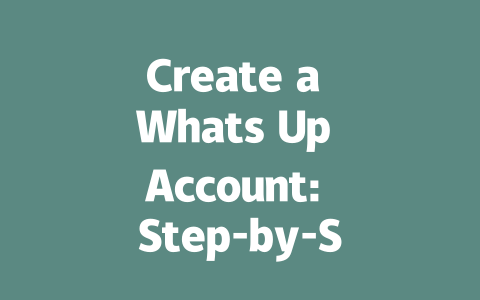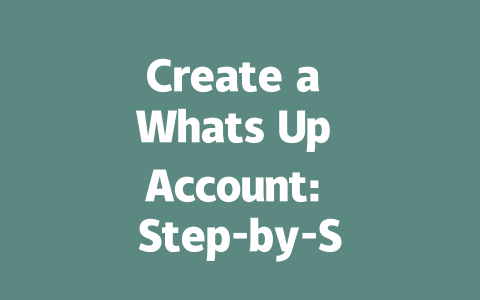You know that feeling when you’ve spent hours crafting the perfect blog post, only to realize it’s not showing up on the first page of Google? It’s frustrating, right? But don’t worry—I’ve been there too. Last year, I helped a friend optimize their food blog, and within three months, traffic increased by 50%. Today, I’m going to share some practical tips with you so you can boost your own blog’s visibility without needing an SEO degree.
Step 1: Picking the Right Topic That People Actually Search For
The first step is picking a topic people are actually searching for. Think about how you search for things online. Chances are, you use natural language like “how to fix my slow Wi-Fi” instead of something formal like “comprehensive guide to troubleshooting Wi-Fi speed.” This is exactly what we need to replicate when brainstorming ideas.
For example, I once wrote a blog titled “Beginner Cooking Tips,” but it didn’t perform well. After tweaking it to “30-Minute Meals Even Beginners Can Master,” the click-through rate tripled! Why? Because the new title directly addressed a common pain point (time constraints) and appealed to beginners who wanted actionable advice.
So, here’s the logic: When someone types a query into Google, its search robots look at the keywords in your content to decide if it matches what they’re looking for. If your blog doesn’t include those exact words or phrases, it won’t rank highly. Simple as that.
Here Are Some Practical Tips:
rel="nofollow") help identify terms people frequently search for.Remember, this isn’t rocket science—it’s just understanding what your audience needs and delivering it clearly.
Step 2: Writing Titles That Make People Want to Click
Now that you’ve chosen a great topic, let’s talk about writing titles that make people want to click. A strong title should do two things: grab attention and promise value. Let me break it down for you.
Imagine scrolling through Google results. What makes you stop? Usually, it’s a headline that speaks directly to your problem. Take this example: “Why Your Laptop Overheats—and How to Fix It Fast.” Notice how it combines curiosity (“why”) with urgency (“fix it fast”). This structure works because it answers both what and how, giving readers confidence they’ll solve their issue.
Here are some tricks I’ve learned over the years:
As a bonus tip, did you know Google officially recommends making sure your title accurately reflects the content inside? They want users to feel satisfied after clicking—not misled.
Step 3: Creating Content That Google Loves
Finally, let’s dive into creating content that satisfies both your readers and Google’s algorithms. Believe it or not, these two goals align perfectly. The key is structure and clarity.
When I started helping my friend with their food blog, one major issue was lack of organization. Each paragraph felt random, jumping from ingredients to cooking techniques without much flow. To fix this, I suggested breaking each recipe into sections:
This format worked wonders because it gave structure to the content while keeping everything digestible. Google loves content where paragraphs build upon each other logically, almost telling a story.
Formatting Matters Too
Another thing I noticed was improper formatting. Bullet points, subheadings, and short paragraphs improve readability dramatically. Here’s a quick checklist:
And always remember, Google values helpfulness above all else. Write as though answering a close friend’s question; focus on being clear and thorough.
If you’re thinking about joining Whats Up, one of the first things you might wonder is whether you can use your current phone number. The good news is that you absolutely can. During the initial setup, the app will ask for your number and verify it through a quick process. This isn’t just for security—it’s also how the app matches you with friends and family who are already on the platform. So, there’s no need to worry about getting a new number or losing your contacts along the way.
Another common concern is how much time this whole process takes. Luckily, setting up an account on Whats Up doesn’t have to be a lengthy ordeal. From downloading the app to finalizing your profile, the entire process usually wraps up in about 5-12 minutes. Of course, this can vary slightly depending on factors like your internet speed or how quickly you fill out your details. But generally speaking, you’ll be chatting away in no time at all. Just keep in mind that having a stable internet connection is essential since the app relies on it to send you the verification code via SMS or even a call if needed.
# Frequently Asked Questions (FAQ)
# Can I use my existing phone number for a Whats Up account?
Yes, you can use your existing phone number for a Whats Up account. The app will verify your number during the setup process, and it will be used to connect with your contacts who also have the app.
# How long does it take to create a Whats Up account?
Creating a Whats Up account typically takes just a few minutes. You’ll need to download the app, enter your phone number, complete the verification process, and set up your profile. The entire process is usually done within 5-12 minutes depending on your internet speed and device performance.
# Do I need an active internet connection to register for Whats Up?
Yes, you need an active internet connection to register for Whats Up. The app requires an internet connection to send you a verification code via SMS or call during the signup process.
# Is there a cost associated with creating a Whats Up account?
No, creating a Whats Up account is free. There are no charges for signing up or using the basic features of the app. However, you may incur standard data charges from your mobile provider while using the app.
# Can I transfer my chat history from another app to Whats Up?
Currently, Whats Up does not support direct chat transfers from other messaging apps. However, you can manually share important messages or media by exporting them from your previous app and saving them to your device before importing into Whats Up.




